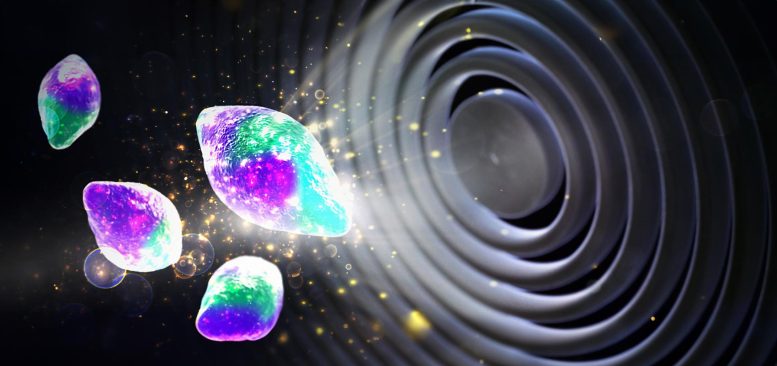

| Date | 23rd, Sep 2023 |
|---|

A team from SLAC, Stanford, MIT, and Toyota Research Institute used machine learning to re-analyze X-ray movies of lithium ions flowing in and out of battery electrode nanoparticles (left) during battery cycling. The false colors in this image show the charge status of each particle and reveal how uneven the process within a single particle can be. Credit: Cube3D
It lets researchers extract pixel-by-pixel information from nanoscale X-ray movies of electrode particles absorbing and releasing lithium ions.
Billions of tiny particles packed into rechargeable lithium-ion battery electrodes are responsible for storing charge and making it available when it’s needed to do work. X-ray movies of this process show the particles absorbing and releasing lithium ions as the battery charges and discharges.
Now, in an important step forward, researchers have used a type of machine learning called “computer vision” to dig even deeper, analyzing each and every pixel of those X-ray movies to discover physical and chemical details of battery cycling that couldn’t be seen before.
The new method has already suggested a way to make the billions of nanoparticles in one type of lithium-ion battery electrode store and release charge more efficiently, researchers from the Department of Energy’s SLAC National Accelerator Laboratory, Stanford University, the Massachusetts Institute of Technology, and Toyota Research Institute reported in Nature on September 13.
“Until now, we could make these beautiful X-ray movies of battery nanoparticles at work, but the movies were so information-rich that understanding the subtle details of how the particles function was a real challenge,” said William Chueh, a Stanford associate professor, SLAC faculty scientist and director of the SLAC-Stanford Battery Center, who co-led the study with MIT Professor Martin Bazant.
“Now we can extract insights that were not possible before,” Chueh said. “This is the kind of fundamental, science-based information that our partners in industry need to develop better batteries faster.”
More broadly, the researchers said, this approach to discovering the physics behind complex patterns in images could even provide unprecedented insights into other types of chemical and biological systems, such as cells dividing in a developing embryo.
The battery particles the research team studied are made of lithium iron phosphate, or LFP. They’re packed by the billions into the positive electrodes of many lithium-ion batteries, each one coated with a thin layer of carbon to improve the electrode’s electrical conductivity.
To watch what’s happening inside the battery while it operates, Chueh’s team builds tiny, transparent cell batteries in which two electrodes are surrounded by an electrolyte solution full of free-moving lithium ions.
When the battery discharges, lithium ions flow into the positive LFP electrode and lodge inside its nanoparticles like cars in a crowded parking garage, in a reaction called intercalation. When the battery charges, they flow back out again and travel to the opposite, negative electrode.
